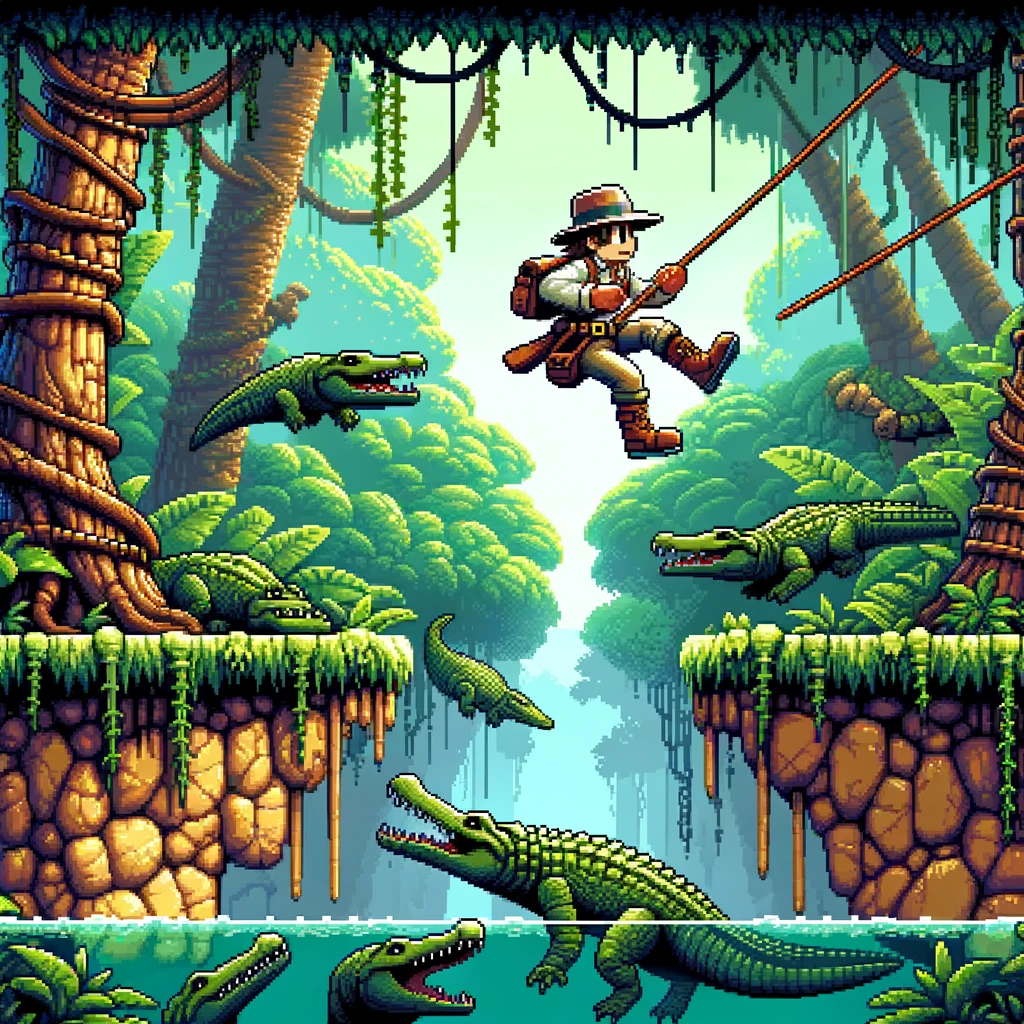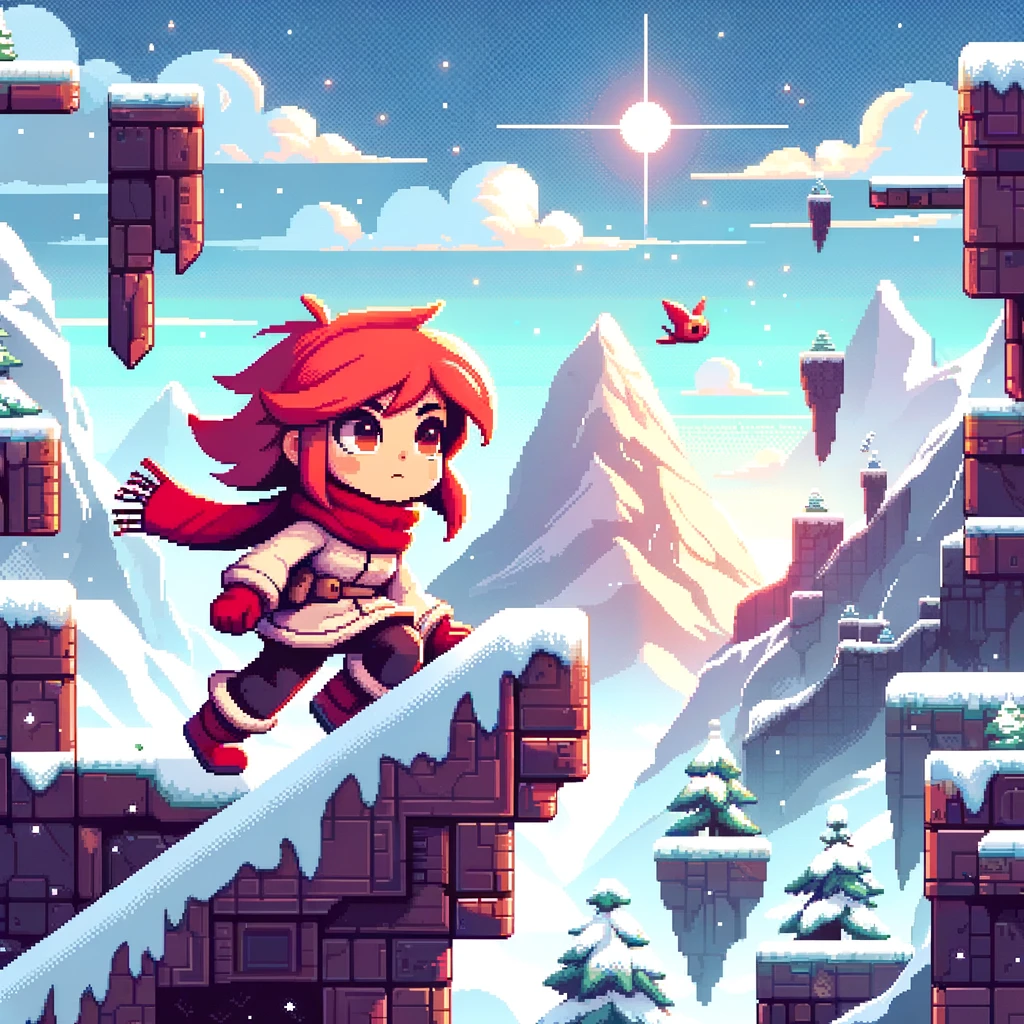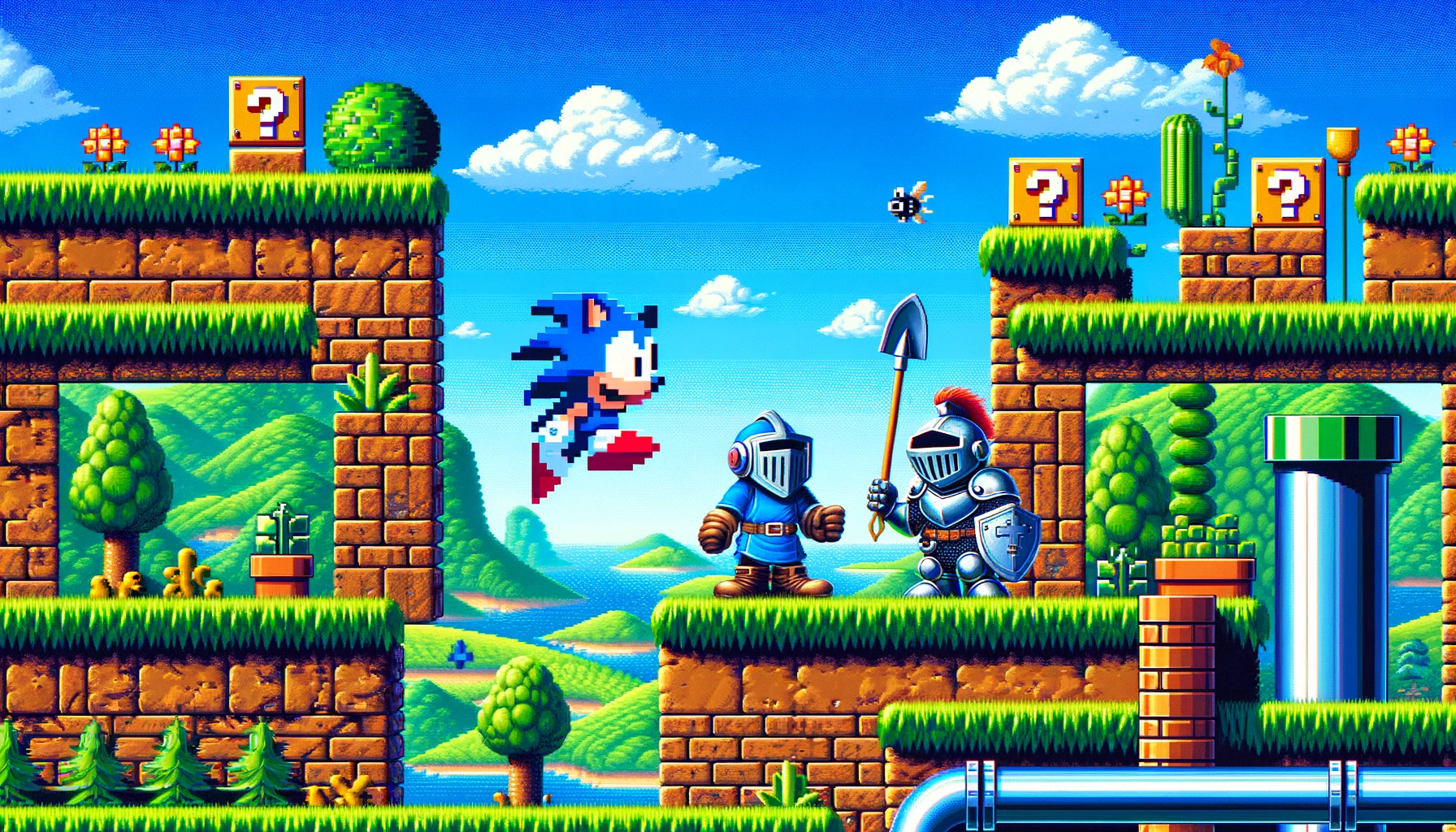The allure of 2D side-scrollers is a testament to their enduring appeal in an industry that has seen exponential technological advancements. From their inception in the early days of gaming to their presence in the current market, these games have captivated audiences with their straightforward yet profoundly engaging gameplay mechanics. This article explores the reasons behind the lasting popularity of 2D side-scrollers, shedding light on their unique charm and unwavering fan base.
Key Takeaways
| Aspect | Details |
|---|---|
| Simplicity and Accessibility | Easy to pick up, yet challenging, making them universally appealing. |
| Nostalgia | Evokes fond memories for many players. |
| Artistic Expression | Allows for distinctive visual styles and creativity. |
| Community and Modding | Strong communities with a focus on custom content and modding. |
| Game Design Fundamentals | Teaches core principles of game design through simple yet deep mechanics. |
2D side-scrollers, with their roots deeply embedded in the early days of arcade gaming, have evolved while retaining their core gameplay principles. This evolution has enabled them to adapt to changing player preferences and technological advancements, ensuring their relevance and appeal across generations.

The Timeless Appeal of Simplicity
2D side-scrollers, in their essence, are defined by straightforward gameplay mechanics that prioritize ease of understanding over complex control schemes. This simplicity is not a limitation but a strength, offering a clear and focused gaming experience that is increasingly rare in an era dominated by titles that boast complexity as a hallmark. Games like “Alex Kidd,” a forgotten franchise that once rivaled Mario, exemplify this appeal through their uncomplicated yet challenging gameplay. Players could easily grasp the controls, but mastering the game required practice and skill, a balance that made early side-scrollers immensely rewarding.
The visual style of 2D games, characterized by their distinct, pixelated art, plays a crucial role in their charm. Unlike the hyper-realistic graphics of modern 3D titles, the graphical limitations of earlier gaming systems fostered a unique aesthetic that has become iconic. This retro appeal is not merely nostalgia; it represents a creative canvas where simplicity in design leads to clarity in gameplay. Games like “Sega Saturn’s rare gems” showcased how limited graphical fidelity didn’t detract from the gaming experience but rather enhanced it by focusing on imaginative worlds and engaging narratives.
Moreover, the straightforward nature of 2D side-scrollers allows for an emphasis on storytelling and character development, often conveyed through the gameplay itself rather than extensive cutscenes or dialogues. Titles such as “Why Retro Games Look the Way They Do” delve into how the visual and design simplicity of these games communicated stories and character arcs, leveraging the limited resources to create memorable gaming experiences.
The design philosophy behind 2D side-scrollers underscores a principle that has become somewhat obscured in the modern gaming industry: the idea that simplicity, rather than being a barrier to creativity, can enhance it. By stripping down to the basics of gameplay, developers are challenged to innovate within constraints, leading to a genre that thrives on imagination and skill rather than budget and technology.
In an age where gaming is often synonymous with high-definition graphics and intricate gameplay mechanics, 2D side-scrollers remind us of the power of simplicity. They prove that with a clear vision and creative ingenuity, limitations can be transformed into strengths, crafting experiences that resonate with players long after their release. As the gaming industry continues to evolve, the lessons from the enduring appeal of 2D side-scrollers remain relevant, teaching us that at the heart of every great game is a simple yet compelling experience that transcends time.
Nostalgia and Cultural Impact
Nostalgia for 2D side-scrollers is a powerful force, driving not just the continued popularity of these games but also their cultural resonance. This nostalgia is twofold: it stems from individual memories of childhood and early gaming experiences, and from a collective cultural memory that values the simplicity and innovation of early video games. For many gamers, 2D side-scrollers were their introduction to the world of video gaming, representing a time of discovery and wonder. These early experiences are often associated with fond memories of simpler times, making the act of playing these games as much about recapturing those feelings as it is about the gameplay itself.
The cultural impact of 2D side-scrollers extends far beyond personal nostalgia. These games have played a significant role in shaping the gaming industry, setting standards for game design, storytelling, and player engagement that are still relevant today. Their influence is evident in the enduring popularity of franchises like “Super Mario” and “Sonic the Hedgehog,” which continue to release new titles and remasters of classic games. Furthermore, the aesthetic and mechanics of 2D side-scrollers have permeated other media, inspiring a genre of indie games that seek to replicate the charm and challenge of their predecessors. These indie games, in turn, contribute to the genre’s longevity, introducing new generations of gamers to the joys of 2D side-scrolling.
Moreover, the cultural impact of these games can be seen in their crossover into mainstream media. Characters from 2D side-scrollers have become iconic figures, recognizable even to those with a passing interest in gaming. This recognition has led to the inclusion of these characters in movies, television shows, and merchandise, further cementing their place in popular culture. The legacy of 2D side-scrollers is also evident in the community of retro gamers and collectors, for whom these games represent a golden age of gaming. This community actively participates in preserving the history and legacy of 2D side-scrollers, whether through the collection of vintage games and consoles or the organization of events and competitions that celebrate the genre.
The nostalgia and cultural impact of 2D side-scrollers are thus key components of their enduring appeal. They are not just games but cultural artifacts that represent a pivotal moment in the history of gaming. Their simplicity, creativity, and the emotional connections they forge with players ensure that 2D side-scrollers will continue to be celebrated and played for years to come.
For many, 2D side-scrollers are a nostalgic reminder of their youth, evoking memories of hours spent in arcades or in front of console screens. This emotional connection has played a significant role in their enduring popularity. Games like Super Mario Bros., Sonic the Hedgehog, and Mega Man have become cultural icons, representing a golden era of gaming that many players look back on fondly. The resurgence of interest in retro gaming has further cemented the status of 2D side-scrollers as timeless classics.

Artistic Expression and Visual Identity
The artistic expression and visual identity of 2D side-scrollers have played a pivotal role in their enduring appeal. This genre has offered a unique canvas for artists and designers to unleash their creativity, leading to some of the most iconic and visually distinct games in the industry. The simplicity of 2D graphics, rather than being a limitation, has been embraced as a strength, allowing for a focus on stylized art, vibrant color palettes, and imaginative world-building that stand out in the gaming landscape.
In 2D side-scrollers, the visual identity is not just about aesthetics but also serves as a crucial element of gameplay. Character designs are often bold and distinctive, making them instantly recognizable and allowing players to quickly identify with the game’s protagonist. This visual distinctiveness extends to the game environments, which are meticulously crafted to reflect the game’s theme and mood, from lush, verdant forests to dystopian urban landscapes. These settings are not mere backdrops but play an integral role in storytelling, guiding the player’s journey and evoking a range of emotions.
Moreover, the artistic direction of 2D side-scrollers often draws inspiration from a variety of sources, including traditional art, pop culture, and even other media such as comics and movies. This eclectic approach has resulted in games that are not only visually captivating but also rich in cultural references and symbolism, adding layers of depth and meaning to the player’s experience.
The emphasis on artistic expression has also facilitated innovation within the genre. As technology has advanced, developers have experimented with blending traditional pixel art with modern graphical techniques, such as parallax scrolling and dynamic lighting, to create visually stunning games that pay homage to their roots while pushing the boundaries of what 2D games can achieve visually. This evolution has ensured that 2D side-scrollers continue to captivate audiences, not just for their nostalgic value but for their artistic merit and visual innovation.
The artistic expression and visual identity of 2D side-scrollers underscore the genre’s capacity for creativity and innovation. By leveraging the unique possibilities of 2D art, these games offer experiences that are as visually engaging as they are fun to play, cementing their place in the hearts of gamers and in the annals of gaming history.
Building Communities and Encouraging Modding
2D side-scrollers have not only captivated players with their gameplay and artistic appeal but have also played a significant role in building vibrant, engaged communities. These communities form around a shared love for the genre, fostering discussions, fan art, and even game development insights. The accessibility and simplicity of 2D side-scrollers make them ideal for modding, where gamers tweak, modify, or create new content for games, breathing new life into classic titles and keeping the community engaged.
Modding has become a cornerstone of the 2D side-scrolling community, encouraging creativity and learning among its members. Many game developers support this by releasing tools and documentation that help fans understand the game mechanics and create their own mods. This open approach has led to the creation of entirely new levels, characters, and even storylines, offering a fresh perspective on beloved games. It’s a testament to the genre’s flexibility and the passion of its fanbase that such an ecosystem of user-generated content has flourished.
Furthermore, these communities often serve as incubators for aspiring game developers who cut their teeth on modding or creating fan versions of their favorite 2D side-scrollers. Through forums, social media, and dedicated websites, veteran and novice game designers alike share advice, feedback, and encouragement. This collaborative environment not only enhances the games themselves but also contributes to the growth of the industry by nurturing the next generation of game developers.
Building communities and encouraging modding have also had the added benefit of increasing the longevity of 2D side-scrollers. Games that might otherwise have been forgotten continue to find new audiences and remain relevant through the efforts of dedicated fans and modders. This cycle of creation, sharing, and modification has established a dynamic, ever-evolving landscape for 2D side-scrollers, ensuring their place in the gaming world for years to come.
The impact of building communities and encouraging modding in the 2D side-scrolling genre cannot be overstated. It represents the collaborative spirit of gaming, showcasing how interactive media can bring people together, fostering creativity and innovation. This aspect of 2D side-scrollers highlights the genre’s ability to adapt and thrive, propelled by a dedicated community that keeps pushing the boundaries of what these games can be.
Teaching the Fundamentals of Game Design
Lastly, 2D side-scrollers serve as an excellent medium for understanding the fundamentals of game design. The constraints of the two-dimensional world force developers to focus on core gameplay mechanics, level design, and player engagement without the distraction of complex 3D environments. This focus on the basics has made side-scrollers a favorite among game designers and educators alike, who often use them as a tool for teaching the principles of game development.
The Legacy of Retro Side-Scrollers in Modern Titles
The influence of retro 2D side-scrollers on modern gaming cannot be understated, serving as a foundational blueprint for contemporary titles that blend classic gameplay mechanics with innovative features. This homage to the past is evident in several acclaimed modern 2D side-scrollers, which not only pay respect to their predecessors but also push the genre forward with their unique twists and advancements.
One notable example is “Hollow Knight,” a game that combines traditional side-scrolling action with deep exploration, intricate world-building, and a dark, captivating narrative. Its success lies in how it expands on the classic formula with a vast, interconnected world and a focus on player-driven discovery, reminiscent of the exploration found in early Metroidvania games.
Another standout title is “Celeste,” which takes the simple mechanic of jumping and evolves it into a deeply emotional journey of self-discovery, challenging players with precision platforming while telling a poignant story. Its pixel art style and challenging gameplay pay homage to the era of 8-bit and 16-bit games, while its narrative depth and modern game design principles set it apart as a contemporary classic.
“Shovel Knight” also deserves mention for its deliberate retro aesthetic and gameplay that feels lifted from the NES era, yet with polished mechanics, a charming narrative, and modern quality-of-life improvements. It serves as a love letter to the genre, incorporating elements from various retro games while introducing unique mechanics and an engaging story.
These games, among others, demonstrate how the legacy of retro 2D side-scrollers has influenced modern titles. They retain the charm and simplicity of their forebears while embracing current technology and storytelling techniques to offer fresh experiences. This blend of old and new ensures that the spirit of 2D side-scrollers continues to thrive, appealing to both nostalgic players and those discovering the genre for the first time.
